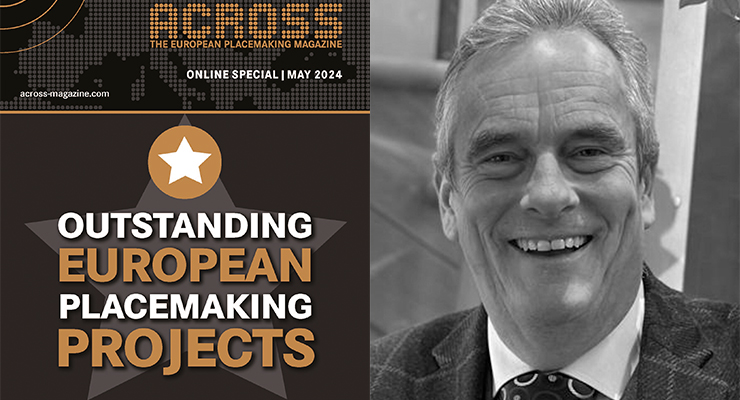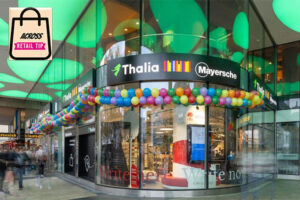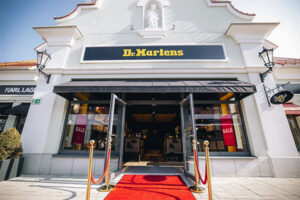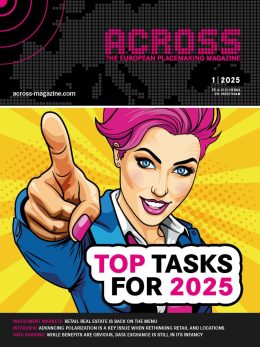My admiration for Metzingen Outlet City goes way beyond the fact that it has managed to establish itself as one of Europe’s leading outlet centers. To my mind, the story is not so much about its success, but how it got there.
What began as a small trading post has evolved into a retail powerhouse, drawing millions of visitors annually, with its success standing as a testament to entrepreneurship, strategic planning, and a commitment to delivering an exceptional shopping experience.
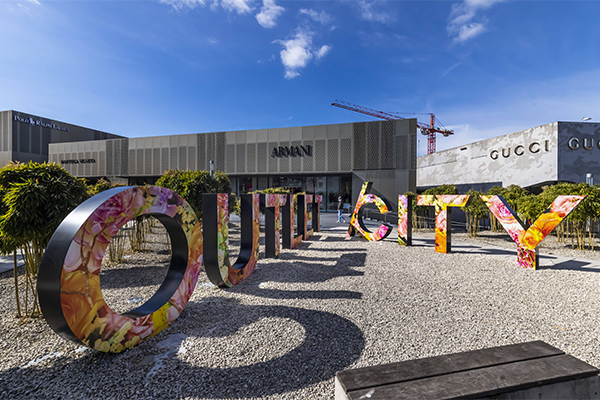
The roots of Metzingen Outlet City can be traced back to Hugo Ferdinand Boss, who founded a small tailoring business there in 1924. From this modest beginning, the Hugo Boss brand gradually gained prominence, evolving into the global luxury fashion brand that it is today. And, as the reputation of the Hugo Boss brand grew, so did that of Metzingen as shoppers came searching for high-quality fashion at competitive prices.
The turning point for Metzingen came in the late 20th century when, under the leadership of the founder’s grandson, Hugo Boss expanded its operations to include outlet stores. Recognizing the potential to leverage the town’s heritage and proximity to Stuttgart – Germany’s automotive and fashion hub – Hugo Boss opened its first outlet store there in 1972, and this marked the birth of what would later become Metzingen Outlet City.
As Hugo Boss thrived, so other fashion brands took notice and followed suit, establishing their own outlet stores in Metzingen. The synergy created by this influx of top-tier brands has transformed Metzingen into a destination for consumers in search of quality and value for money. Today, Metzingen Outlet City is home to more than 380 brands, offering a diverse range of clothing, accessories, and lifestyle products from companies such as Nike, Tommy Hilfiger, Burberry, Furla, Hugo Boss, and many more.
Spanning 50,000 sq m, the architecture of the outlet is nothing short of spectacular. Sprawling across the town, the outlet manages to seamlessly integrate with offices and residential spaces above, creating a vibrant urban landscape. With over 2000 employees and drawing more than four and a half million visitors annually from 185 nationalities, it has become a beacon of commerce and cultural convergence. The meticulous design, featuring a diverse array of buildings with unique architectural styles, adds to its allure thanks to a blend of modern and traditional elements such as exposed timber beams, pitched roofs, and glass facades.

One of the things I like most about Metzingen is that unlike some sprawling, labyrinthine outlets, it is designed with pedestrians in mind. Wide, cobbled walkways, open-air plazas, green spaces, and seating areas, provide plenty of opportunity for rest and relaxation, transforming shopping into a social experience.
Metzingen’s strategic location has also played a major part in its success. Its position at the crossroads of major transportation routes – including the A8 motorway and Stuttgart airport – makes it easily accessible to domestic and international visitors alike, whilst its picturesque surroundings, with the Alps as a backdrop, provide a charming setting for a day of shopping and leisure. And it never stands still, continually reinventing itself in order to meet evolving trends and consumer preferences. In recent years, the introduction of upmarket dining options has elevated the overall shopping experience, thereby attracting a more discerning clientele. Additionally, the implementation of digital innovations such as online reservation systems and virtual shopping assistants has enhanced convenience and personalized the service available for shoppers.
Beyond its economic impact, the outlet has played a vital role in fostering a sense of community and cultural exchange. The annual late-night shopping evenings, featuring live music, entertainment, and exclusive discounts, have become traditional events that bring residents and visitors together. Furthermore, initiatives such as the Metzingen Outlet City Foundation, which supports local charities and cultural projects, further demonstrates a commitment to giving back to the community. This close collaboration with the local community, as well as businesses and local authorities, will undoubtedly have made securing planning consent for expansion that much more straightforward, including eight spacious car parks with nearly 4000 parking spaces plus electric charging points.”
Although it is well within 90 minutes travelling time of Stuttgart and Munich, Metzingen Outlet City is a good 20 minutes away from the nearest major motorway junction, yet this distance has proven to be inconsequential. Visitors flock to take advantage of the quality and variety of brands on offer, and this goes a long way towards explaining why it is one of Europe’s leading outlet centers.

